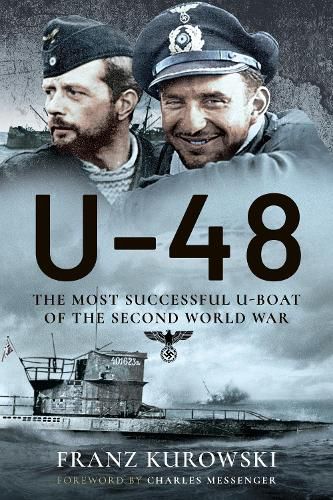Readings Newsletter
Become a Readings Member to make your shopping experience even easier.
Sign in or sign up for free!
You’re not far away from qualifying for FREE standard shipping within Australia
You’ve qualified for FREE standard shipping within Australia
The cart is loading…






Following the signing of the Treaty of Versailles in 1919, Germany was not permitted to build or operate submarines. Clandestine training about Finnish and Spanish submarines took place and U-boats were still built to German designs in Dutch yards. At the outset of the Second World War, Doenitz argued for a 300-strong U-boat fleet, since his force of 57 U-boats ‘could only inflict pin-pricks against British seaborne trade’. In August 1939, U-48 left Germany, commanded by ‘Vaddi’ Schultze, to take up a waiting position around England. It scored its first success on 5 September, when it torpedoed the British freighter Royal Sceptre, then the Winkleigh on 8 September. On both occasions
the first of many
Schultze showed himself to be a notable humanitarian: he addressed signals to Churchill giving positions of the sinkings so that crews could be saved. By 1 August 1941, U-48, the most successful boat of the Second World War, had sunk 56 merchant ships of 322,478 gross tons and one corvette. She was then transferred to the Baltic as a training boat. Schultze became commander of operation 3 U-Flotilla and later was appointed commander, II/Naval College Schleswig. He died in 1987 at the age of 78. U-48 was scuttled on 3 May 1945. AUTHOR: Born in Dortmund in 1923, Frank Kurowski initially trained as a turner. Called up in 1942, he fought with the Afrika Korps as a Luftwaffe paratrooper. He has been a freelance journalist since 1958 and is the author of more than 100 books on the history of the Second World War, including the acclaimed series ‘Panzer Aces: German Tank Commanders in World War II’.
$9.00 standard shipping within Australia
FREE standard shipping within Australia for orders over $100.00
Express & International shipping calculated at checkout
Following the signing of the Treaty of Versailles in 1919, Germany was not permitted to build or operate submarines. Clandestine training about Finnish and Spanish submarines took place and U-boats were still built to German designs in Dutch yards. At the outset of the Second World War, Doenitz argued for a 300-strong U-boat fleet, since his force of 57 U-boats ‘could only inflict pin-pricks against British seaborne trade’. In August 1939, U-48 left Germany, commanded by ‘Vaddi’ Schultze, to take up a waiting position around England. It scored its first success on 5 September, when it torpedoed the British freighter Royal Sceptre, then the Winkleigh on 8 September. On both occasions
the first of many
Schultze showed himself to be a notable humanitarian: he addressed signals to Churchill giving positions of the sinkings so that crews could be saved. By 1 August 1941, U-48, the most successful boat of the Second World War, had sunk 56 merchant ships of 322,478 gross tons and one corvette. She was then transferred to the Baltic as a training boat. Schultze became commander of operation 3 U-Flotilla and later was appointed commander, II/Naval College Schleswig. He died in 1987 at the age of 78. U-48 was scuttled on 3 May 1945. AUTHOR: Born in Dortmund in 1923, Frank Kurowski initially trained as a turner. Called up in 1942, he fought with the Afrika Korps as a Luftwaffe paratrooper. He has been a freelance journalist since 1958 and is the author of more than 100 books on the history of the Second World War, including the acclaimed series ‘Panzer Aces: German Tank Commanders in World War II’.